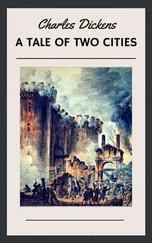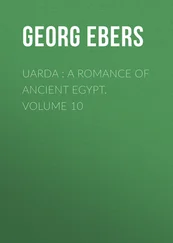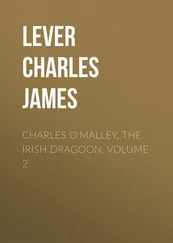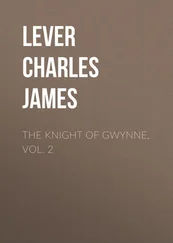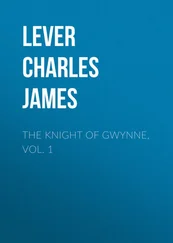Charles Bucke - Ruins of Ancient Cities (Vol. 2 of 2)
Здесь есть возможность читать онлайн «Charles Bucke - Ruins of Ancient Cities (Vol. 2 of 2)» — ознакомительный отрывок электронной книги совершенно бесплатно, а после прочтения отрывка купить полную версию. В некоторых случаях можно слушать аудио, скачать через торрент в формате fb2 и присутствует краткое содержание. Жанр: foreign_antique, foreign_prose, на английском языке. Описание произведения, (предисловие) а так же отзывы посетителей доступны на портале библиотеки ЛибКат.
- Название:Ruins of Ancient Cities (Vol. 2 of 2)
- Автор:
- Жанр:
- Год:неизвестен
- ISBN:нет данных
- Рейтинг книги:4 / 5. Голосов: 1
-
Избранное:Добавить в избранное
- Отзывы:
-
Ваша оценка:
- 80
- 1
- 2
- 3
- 4
- 5
Ruins of Ancient Cities (Vol. 2 of 2): краткое содержание, описание и аннотация
Предлагаем к чтению аннотацию, описание, краткое содержание или предисловие (зависит от того, что написал сам автор книги «Ruins of Ancient Cities (Vol. 2 of 2)»). Если вы не нашли необходимую информацию о книге — напишите в комментариях, мы постараемся отыскать её.
Ruins of Ancient Cities (Vol. 2 of 2) — читать онлайн ознакомительный отрывок
Ниже представлен текст книги, разбитый по страницам. Система сохранения места последней прочитанной страницы, позволяет с удобством читать онлайн бесплатно книгу «Ruins of Ancient Cities (Vol. 2 of 2)», без необходимости каждый раз заново искать на чём Вы остановились. Поставьте закладку, и сможете в любой момент перейти на страницу, на которой закончили чтение.
Интервал:
Закладка:
Pergamus gave birth to Apollodorus, the preceptor of Augustus; and Galen, next to Hippocrates the greatest physician that ever adorned the annals of medical science. It is also remarkable for having been alluded to by Tiberius, in one of his hypocritical speeches to the Roman senate, as reported in Tacitus. “I know very well,” said he, “that many men will condemn me for suffering Asia to build me a temple, as Spain at present would do: but I will give you a reason for what I have done, and declare my resolution for the future. The divine Augustus, whose actions and words are so many inviolable laws to me, having consented that the people of Pergamus should dedicate a temple to him and the city of Rome, I thought I might follow so great an example; so much the rather, since the honour, intended me, was joined with the veneration paid to the senate. But as on the one hand it might have been too great a piece of severity to have denied it for once; so on the other, doubtless, it would be too great a vanity and folly, to suffer one’s self to be adored as a God, through all the provinces of the empire. Besides, it cannot but be a great diminution to the glory of Augustus, to communicate it indifferently to all the world. For my own part, I am mortal, and subject to human infirmities; I am contented with being a prince here, without being raised to the throne of a God. I protest to you, I desire this testimony may be given of me to posterity. It will be glory enough for me to be thought worthy of my ancestors; a vigilant prince, one who is insensible of fear, when the commonwealth is in danger. These are the temples and monuments which I desire to erect in your breasts: for works of marble and brass, raised to the glory of princes, are contemned by posterity as so many naked sepulchres, when their memory is condemned. I entreat heaven to give me a serenity of mind, and a spirit to discern and judge uprightly of the laws of God and man; and after my decease, I confide, my fellow-citizens and allies will preserve my memory with their blessings and praises.”
Mr. Turner found several ancient inscriptions at Pergamus. He ascended the ancient Acropolis, which is built on a mount of about two hundred feet height, overhanging the town: on the top are extensive remains of the walls both of the Roman and Venetian city. Part of the walls are built with large fluted columns, laid length-ways. Among the Roman ruins are several immense arched caves under ground, about sixty feet deep. At the top of the hill lay a large Corinthian capital, and half way down the hill a small marble column, on which is a Greek inscription, now illegible.
In a valley west of the Acropolis are considerable remains of a large Roman amphitheatre; near which is a gate with part of a wall. The arch of the gate is curiously inclined, being unequal; the only instance of such an irregularity Mr. Turner ever saw in an ancient building. There are also ruins of several Roman baths; in one of which was found a vase, which has excited a great deal of admiration. Mr. Turner thus describes it: – “It is of fine marble, and in good preservation, being only a little broken round the rim. The shape of it is a flattened globe; on the outside round the circumference of the centre are fifteen equestrian figures in high-relief; nine of these have their heads much broken, nine have their arms extended; the horses are all at full speed, and a race is probably the subject represented, as none of the figures bear arms. Five of the figures are clinging to their horses, and one appears to be falling. Nothing,” continues Mr. Turner, “can exceed the spirit of the execution; the very horses seem to breathe; above and below the figures a band, on which is engraved the pattern of a laurel leaf, surrounds the vase: a very correct engraving of which is given in the work of Choiseul-Gouffier. There are said to have been seven of these vases at Pergamus; six of which were taken to Constantinople.”
There are also in the neighbourhood of Bergamo, the present ruins of this city, six tumuli; three large and three small 79 79 Tacitus; Plutarch; Choiseul-Gouffier; Rees; Turner.
.
NO. XIV. – PERSEPOLIS
“ – I know
The wealth,” she cries, “of every urn,
In which unnumbered rubies burn,
Beneath the pillars of Chilminar.”
This city is supposed to have been founded by the famous Jemsheed, from whom it is to this day called Tuklit-e-Jemsheed; – the throne of Jemsheed; a prince, to whom Persian authors attribute the invention of many useful arts 80 80 Sir John Malcolm has preserved an account of Jemsheed, from Moullab Ackber’s MSS., which may serve to diversify our page. “Jemsheed was the first who discovered wine. He was immoderately fond of grapes, and desired to preserve some; which were placed in a large vessel, and lodged in a vault for future use. When the vessel was opened, the grapes had fermented. Their juice, in this state, was so acid, that the king believed it must be poisonous. He had some vessels filled with it, and poison written upon each: these were placed in his bed-room. It happened that one of his favourite ladies was affected with nervous head-aches. The pain distracted her so much, that she desired death; and observing a vessel with the word poison written upon it, she took it and swallowed its contents. The wine, for such it had become, overpowered the lady, who fell into a sound sleep, and awoke much refreshed. Delighted with the remedy, she repeated the dose so often, that the monarch’s poison was all drunk. He soon discovered this, and forced the lady to confess what she had done. A quantity of wine was made; and Jemsheed, and all his court, drank of the new beverage, which, from the circumstance that led to its discovery, is to this day known in Persia by the name of zeher-e-khoosh, or the delightful poison.”
; and to whom they refer the first great reform in the manners and usages of their countrymen. He, also, introduced the solar year; and ordered the first day of it, when the sun entered Aries, to be celebrated as a festival 81 81 It is called Nouroze. Some of the sculptures of the dilapidated palace are supposed to represent the processions at this festival.
.
An old Persian author has left the following description of Persepolis: – “Jemsheed built a fortified palace at the foot of a hill, which bounds the fine plain of Murdasht to the north-west. The platform, on which it was built, has three faces to the plain, and one to the mountain. It is formed of hard, black granite. The elevation from the plain is ninety feet; and every stone, used in this building, is from nine to twelve feet long, and broad in proportion. There are two great flights of stairs to this palace, so easy of ascent, that a man can ride up on horseback; and on the platform a palace has been erected, part of which still remains in its original state, and part is in ruins. The palace of Jemsheed is that, now called the Chesel-Setoon, or Forty Pillars. Each pillar is formed of a carved stone, is sixty feet high, and is ornamented in a manner so delicate, that it would seem to rival upon hard granite the sculpture of a carving upon the softest wood. There is no granite like that, of which these pillars are made, to be now found in Persia: and it is unknown from whence it is brought. Some most beautiful and extraordinary figures ornament this palace; and all the pillars, which once supported the roof (for that has fallen) are composed of three pieces of stone, joined in so exquisite a manner, as to make the beholder believe, that the whole shaft is one piece. There are several figures of Jemsheed in the sculpture; in one he has an urn in his hand, in which he burns benjamin, while he stands adoring the sun; in another, he is represented as seizing the mane of a lion with one hand, while he stabs him with another.”
Читать дальшеИнтервал:
Закладка:
Похожие книги на «Ruins of Ancient Cities (Vol. 2 of 2)»
Представляем Вашему вниманию похожие книги на «Ruins of Ancient Cities (Vol. 2 of 2)» списком для выбора. Мы отобрали схожую по названию и смыслу литературу в надежде предоставить читателям больше вариантов отыскать новые, интересные, ещё непрочитанные произведения.
Обсуждение, отзывы о книге «Ruins of Ancient Cities (Vol. 2 of 2)» и просто собственные мнения читателей. Оставьте ваши комментарии, напишите, что Вы думаете о произведении, его смысле или главных героях. Укажите что конкретно понравилось, а что нет, и почему Вы так считаете.


